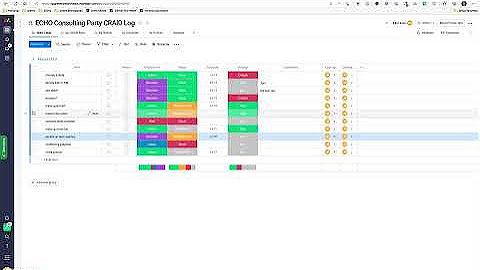How they enhance data visualization
How they enhance data visualization
Blog Article
Filters and slicers serve as essential components in the arsenal of data visualization tools within Power BI. While both are used to refine and narrow down data sets, they operate in slightly different ways. Filters are applied directly to visuals, allowing users to focus on specific subsets of data based on predetermined criteria. On the other hand, slicers provide interactive controls that enable users to dynamically filter data across multiple visuals simultaneously.
How they enhance data visualization
HTTPS://WWW.YOUTUBE.COM/@ECHOCONSULTING

By leveraging filters and slicers, users can delve deeper into their data and uncover meaningful insights with ease. These tools facilitate interactive exploration of data, enabling users to adjust parameters on the fly and observe real-time changes in visualizations. Whether it's analyzing sales performance by region or tracking website traffic over time, filters and slicers empower users to tailor their visualizations to suit their analytical needs.
APPLYING FILTERS IN POWER BI
Filtering data using various criteria
In Power BI, applying filters is a straightforward process that allows users to refine their data based on a wide range of criteria. Whether it's filtering by date, category, or numerical range, Power BI offers a plethora of options to slice and dice data according to specific requirements. With the ability to apply multiple filters to a single visualization, users can drill down into their data and extract actionable insights with precision.
Creating interactive reports with filters
One of the key advantages of using filters in Power BI is the interactivity they bring to reports. By incorporating filters into visuals, users can empower stakeholders to explore data dynamically and gain deeper insights into underlying trends and patterns. Whether it's toggling between different time periods or comparing performance across various product categories, interactive reports fueled by filters foster engagement and collaboration among users.
UTILIZING SLICERS FOR ENHANCED VISUALIZATION
Overview of slicers in Power BI
Slicers offer a user-friendly way to filter data across multiple visuals within a Power BI report. Unlike traditional filters, slicers provide interactive controls such as dropdown menus or checkboxes, allowing users to adjust filter criteria with ease. By placing slicers alongside visuals, users can seamlessly interact with their data and gain a holistic view of key metrics and KPIs.
Customizing slicers for specific needs
In Power BI, slicers can be customized to align with specific reporting requirements and aesthetics. From adjusting the layout and appearance of slicers to configuring default selections and multi-select options, users have the flexibility to tailor slicers to suit their preferences. Additionally, advanced features such as hierarchical slicers and custom sorting enable users to fine-tune their slicer experience for optimal usability and clarity.
CREATING DYNAMIC VISUALS WITH FILTERS AND SLICERS
Incorporating filters and slicers into visualizations
By integrating filters and slicers into visualizations, users can create dynamic reports that adapt to changing data conditions. Whether it's applying a date filter to a line chart or using a slicer to segment data by product category, these interactive elements enhance the flexibility and responsiveness of visualizations. As a result, users can gain deeper insights into their data and make informed decisions with confidence.
Demonstrating the impact on data analysis
The use of filters and slicers in Power BI can significantly impact the way data is analyzed and interpreted. By providing users with the ability to interactively explore data, filters and slicers empower them to uncover hidden trends, identify outliers, and derive actionable insights. Whether it's identifying underperforming regions or understanding the factors driving sales growth, the dynamic nature of filters and slicers facilitates more informed decision-making processes. Report this page